
Are the inside of oyster shells iridescent?
Have you ever cracked open an oyster, only to be mesmerized by the shimmering beauty of its shell’s interior? That captivating play of colors—an enchanting dance between blues, greens, and silvers—often leaves us wondering: what exactly causes this stunning iridescence? In a world where nature constantly surprises us with its artistry, the inside of an oyster shell stands out as one of its most exquisite creations. Join us as we dive into the science behind this natural phenomenon and explore the fascinating reasons why these marine gems shine so brightly!
Oyster shells and their appearance

Oyster shells are more than just nature's protective armor for these fascinating mollusks; they also house a stunning secret. When you crack one open, the inside reveals a dazzling display of colors that can take your breath away. This beautiful layer is not only an aesthetic marvel but part of the oyster's complex biology. Have you ever wondered what makes these shells shimmer and shine? Let's dive into the captivating world of iridescence found in oyster shells and discover why this natural phenomenon has piqued human curiosity throughout history.
What is iridescence and where can we find it in nature?

Iridescence is the phenomenon where surfaces appear to change color when viewed from different angles. It creates a beautiful spectacle that captivates many observers. This dazzling effect can be found in various natural elements.
From soap bubbles to peacock feathers, iridescence showcases nature's artistry. The intricate play of light refracting through layers gives each surface its unique shimmer. In marine life, creatures like fish and shells display this optical wonder too. Iridescent patterns serve not just for beauty but also for communication and camouflage within their environments.
The science behind the iridescent layer on the inside of oyster shells
How does iridescence work?
The science behind it involves microscopic structures that manipulate light waves. These tiny formations create a rainbow-like effect, enchanting anyone lucky enough to witness them up close. Nature undoubtedly has a flair for creating astonishing visuals across all realms of existence.
The iridescent layer found inside oyster shells is scientifically known as nacre, or mother-of-pearl. This natural substance forms in layers over time, created by the oyster to protect its soft body from irritants.
What is nacre is made of?
Nacre consists of aragonite and protein. The arrangement of these materials gives rise to the shimmering effect we see when light hits the surface at different angles. It’s a complex process that showcases nature's artistry. Each oyster produces nacre in response to foreign particles like sand or parasites. By layering this iridescent material, they create a smooth surface that minimizes irritation.
Light interference plays a crucial role in how we perceive color within these shells. Depending on the thickness and structure of each layer, hues can shift dramatically, creating an enchanting display unique to every individual shell.
Factors that affect the intensity and color of the iridescence in oyster shells

The intensity and color of iridescence in oyster shells can vary significantly. Several environmental factors play a crucial role in this phenomenon.
- Water quality is essential. Oysters thrive best in clean, nutrient-rich waters. Pollutants can dull their shells' shine, affecting the display of colors.
- Temperature also matters. Warmer waters may enhance the production of nacre, leading to richer hues and more vibrant displays. Conversely, extreme cold can hinder growth.
- The species of oyster influences appearance as well. Different types produce varying layers of mother-of-pearl, each showcasing distinct shades and patterns.
- Lastly, age contributes to the shell's iridescence. Older oysters typically have thicker nacre layers that exhibit deeper colors over time, adding complexity to their beauty.
Together, these factors create a captivating mosaic within each oyster shell that changes with its environment and life stage.
The cultural significance of iridescent oyster shells
Iridescent oyster shells, often referred to as mother-of-pearl, hold significant cultural value across various societies. In many Indigenous cultures, these shells are symbols of beauty and protection. They are frequently used in jewelry and ceremonial items, reflecting the wearer's connection to nature. In coastal communities, oyster shells have been integral to folklore and storytelling. Tales of treasure hidden within their shimmering layers captivate imaginations and inspire art. Additionally, their lustrous quality has made them a popular choice in interior design. Many artisans incorporate iridescent shells into decor pieces, celebrating the ocean's allure.
From ancient civilizations using them for adornments to modern designers elevating aesthetic appeal, iridescent oyster shells continue to inspire creativity worldwide. Their exquisite shine transcends mere decoration; it embodies a rich history and deep-rooted traditions that connect humans with the sea's mysteries.
Other animals with iridescent features and their purpose

Iridescence isn't just an oyster shell phenomenon. Many creatures flaunt this captivating trait. Take the peacock, for example. Its feathers shimmer in a myriad of colors to attract mates. The iridescent quality changes with light and angle, creating a stunning visual display. Butterflies also showcase this magic. Their wings can appear different hues based on how light interacts with tiny scales. This not only adds beauty but helps them blend into their surroundings or warn predators about their toxicity. In the ocean, certain fish like the parrotfish exhibit vivid iridescence as well. For them, it’s about communication and signaling fitness to potential partners. Even some beetles boast remarkable surfaces that reflect light uniquely. These adaptations serve various purposes from mating displays to predator deterrents.
Nature's use of iridescence is diverse, showcasing evolution’s creativity across species beyond just oyster shells.




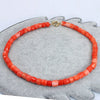



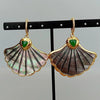


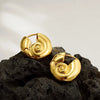






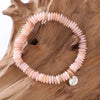

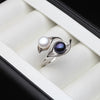











Leave a comment